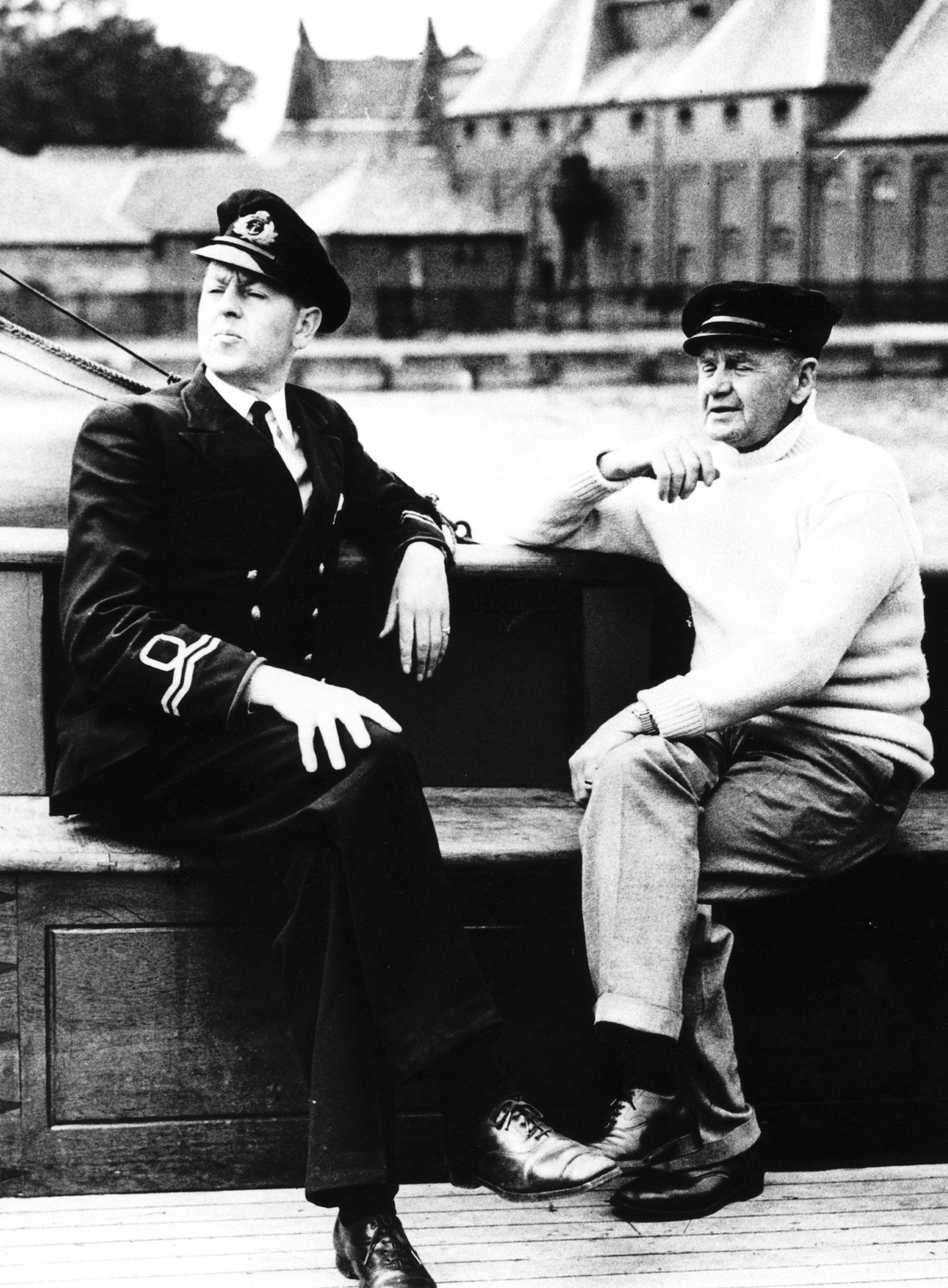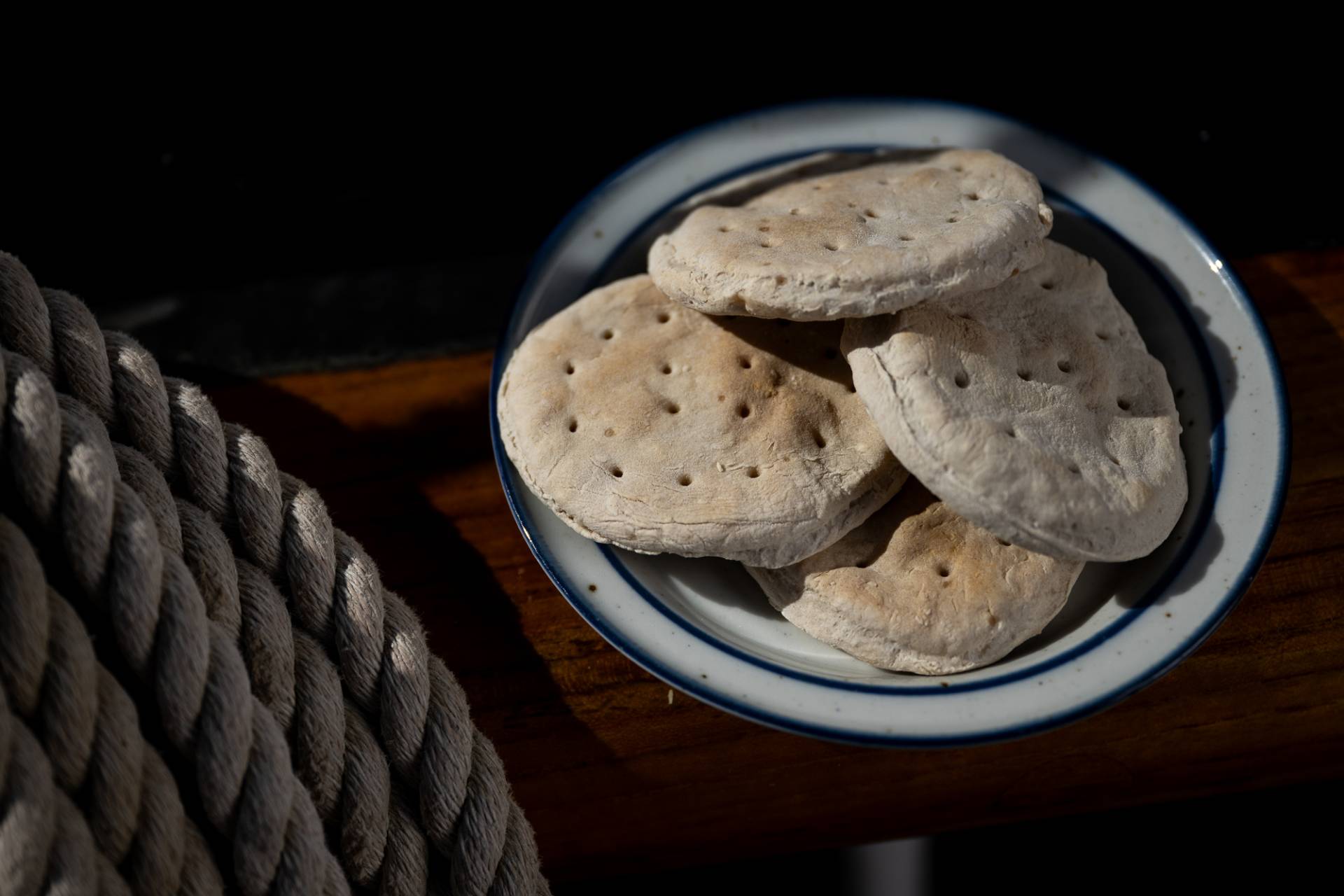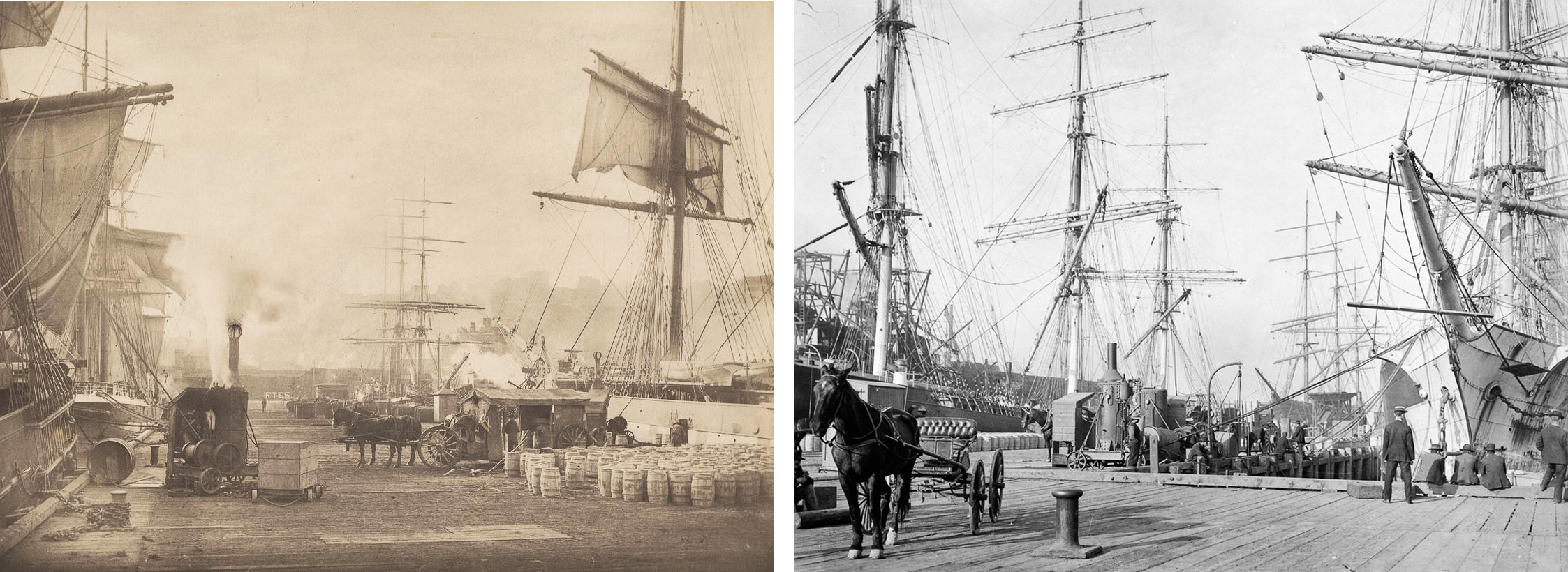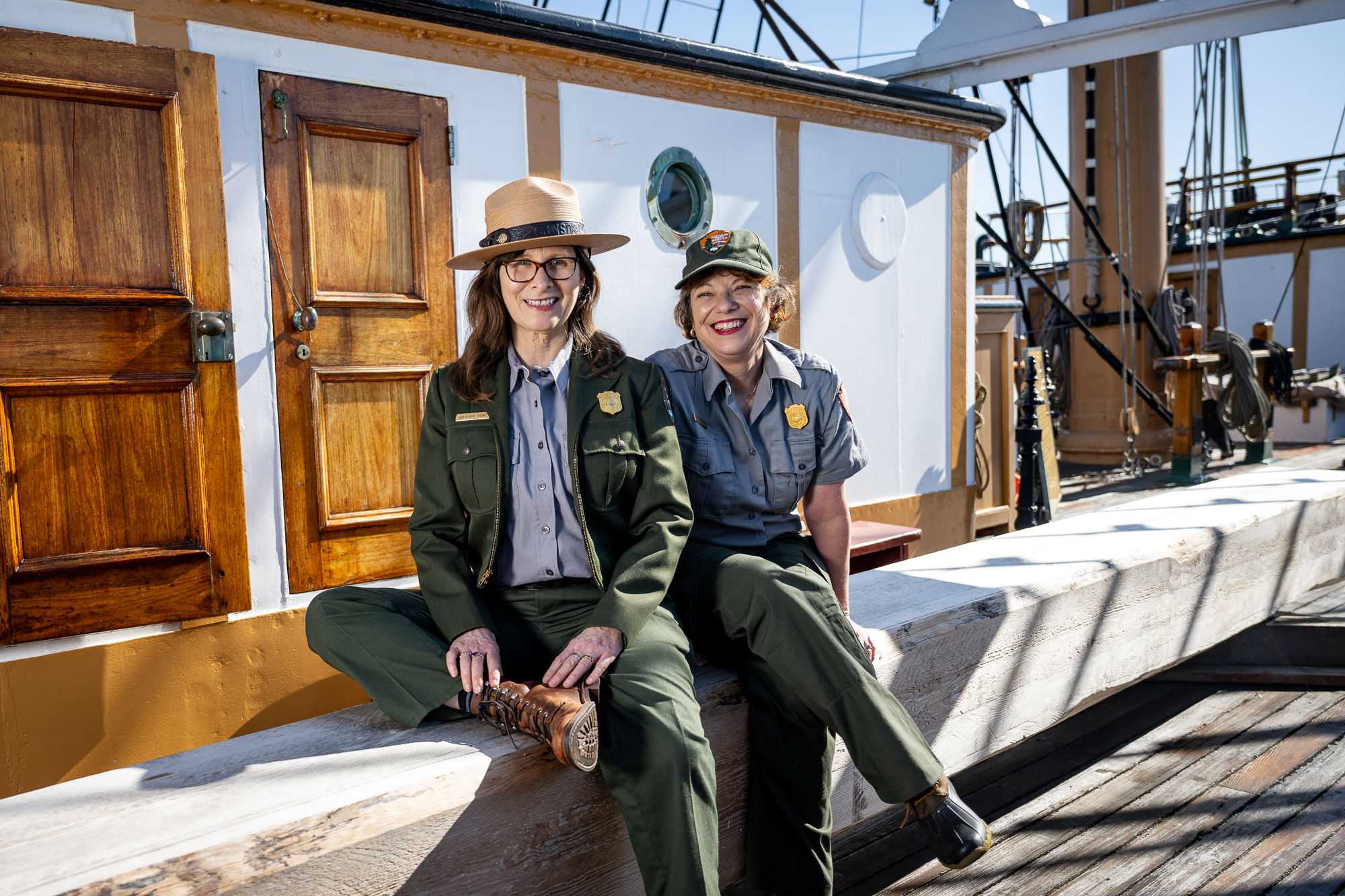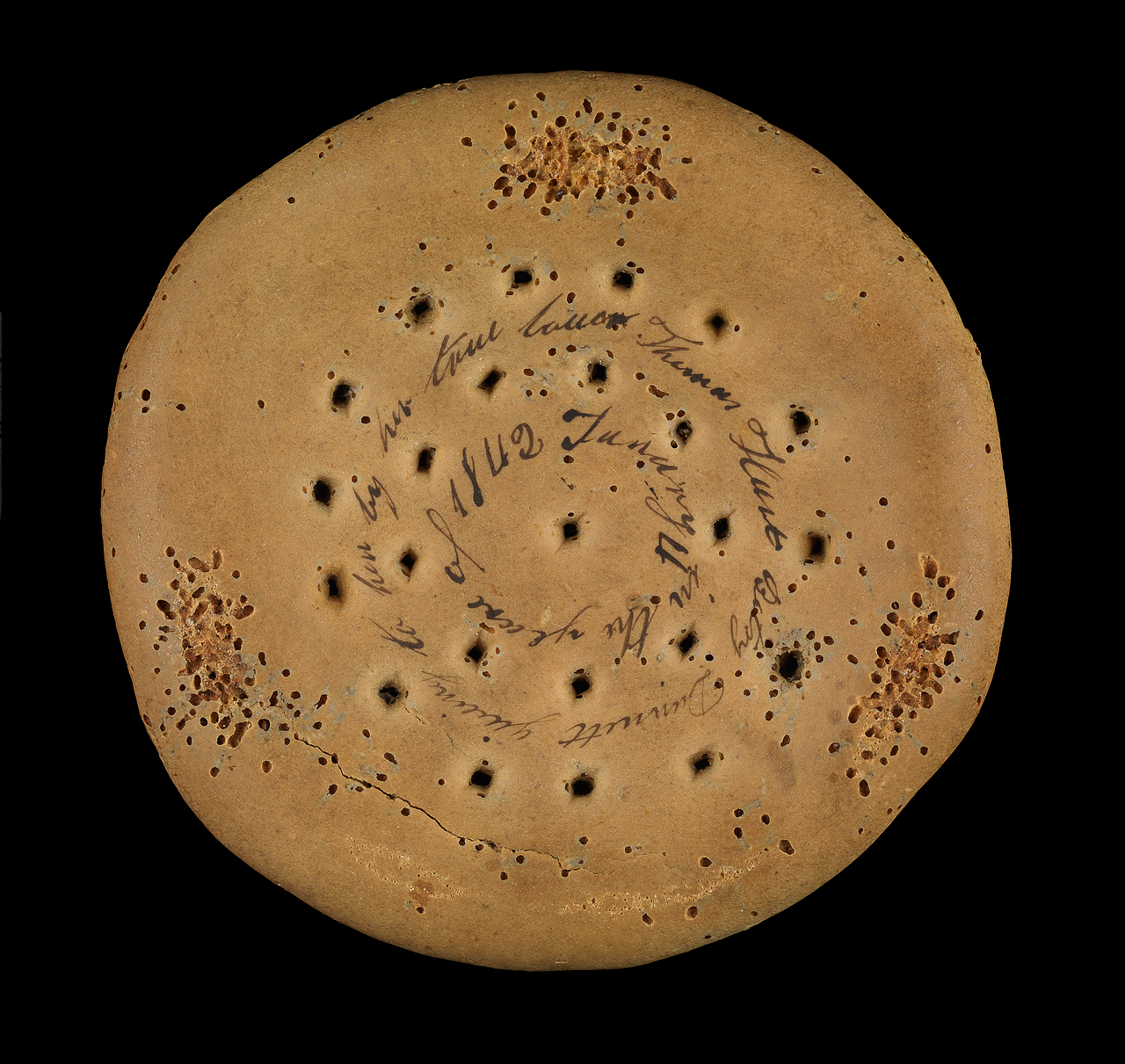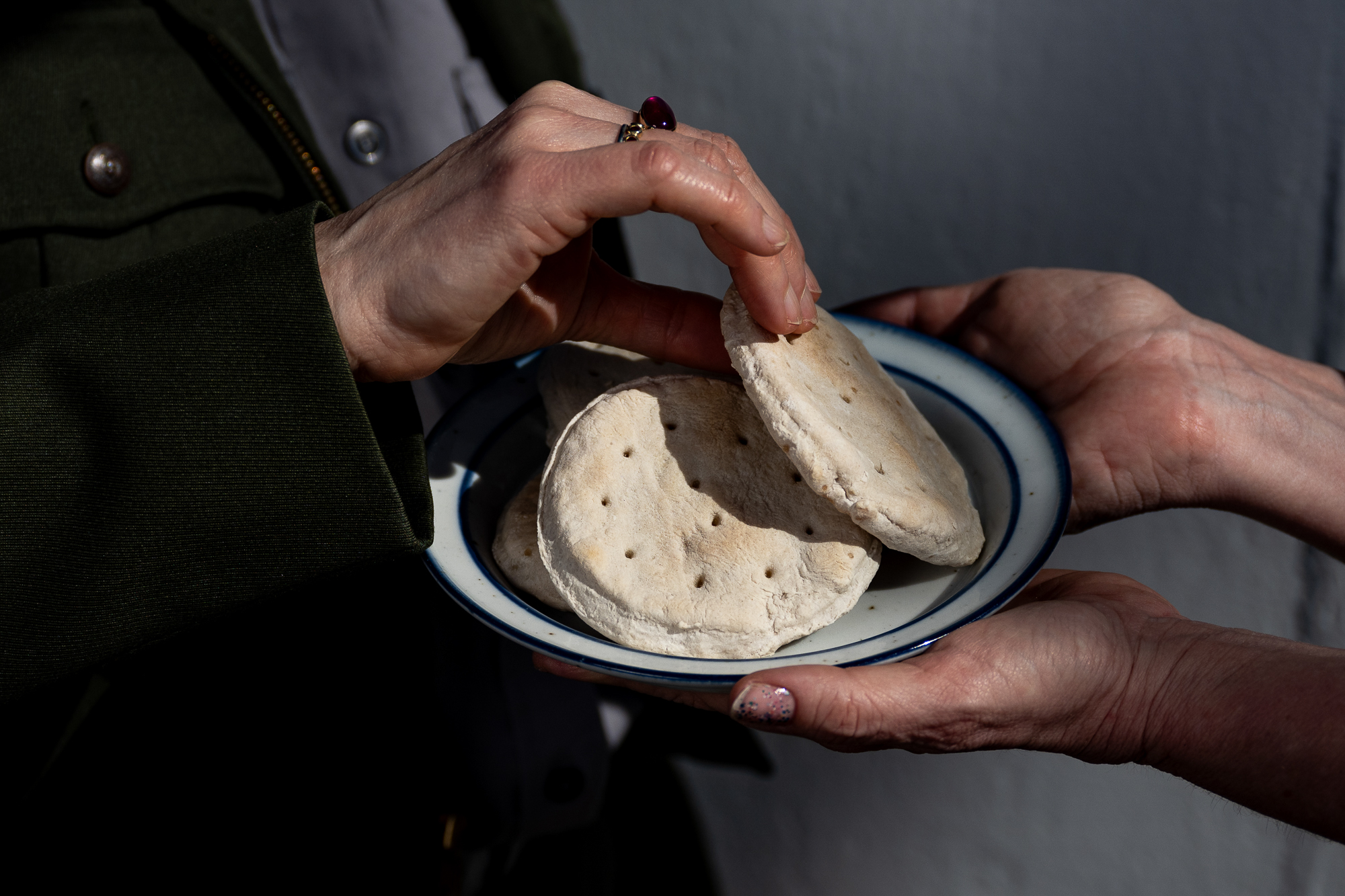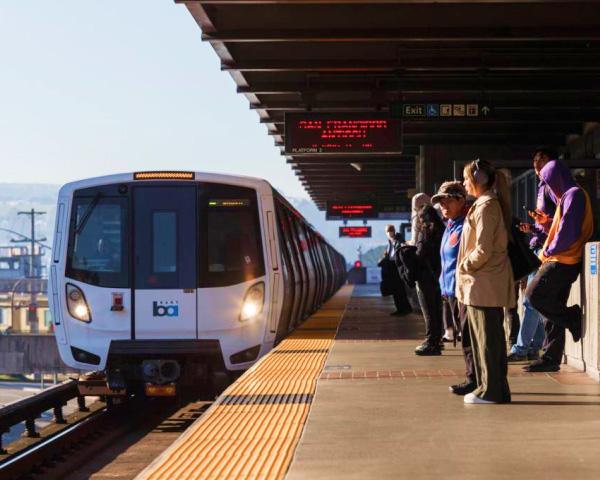Episode Transcript
Olivia Allen-Price: Hey everyone, Olivia Allen-Price here, and you’re listening to Bay Curious.
Here’s a thing about me: I love a good biscuit. I grew up in North Carolina, where biscuits are a point of pride. It seems like everyone has a grandma who makes a good one, but don’t bother asking for the recipe because there isn’t one. It’s all done by feel — eyeballing the flour in the bowl, the texture of the dough between your fingers.
So when a biscuit question arrived in our Bay Curious mailbox, it grabbed my attention right away.
Carl Merritt: Frisco biscuits? I need your help on that one.
Olivia Allen-Price: This is Carl Merritt — our question-asker this week. A while back, he was reading the biography of a storied sailor when he came across the term Frisco Biscuit. It left him feeling stumped.
Carl Merritt: He describes it as crispy and six inches in diameter. He says it’s known the world over. So, so I was hoping maybe you can find something.
Olivia Allen-Price: But for something known the world over, a quick internet search didn’t turn much up.
Carl Merritt: Well, I’m glad I threw you a curveball. That’s great news.
Olivia Allen-Price: When I passed off the question to one of our Bay Curious reporters, I was secretly hoping they’d crack the code quickly, get some local chefs to give the recipe a whirl — And give me a taste test.
But turns out my dream of a flaky, buttery, crispy San Francisco-made biscuit was destined to remain a dream.
Bay Curious theme music starts
This week — a culinary, history, maritime mystery. What is a Frisco Biscuit?
That’s all coming up! Stay with us.
Theme music ends
Olivia Allen-Price: To help us answer Carl’s question — what is a Frisco Biscuit? — we’ve put Bay Curious reporter Gabriela Glueck on the job. Her first step? Find the source in question — the book where ‘Frisco Biscuit’ makes its appearance — and get to know a bit more about the guy who wrote it.
A man by the name of Charles Lightoller.
Gabriela Glueck: Charles Lightoller was a sailor, as true a seaman at heart as it is possible to be. And in his biography, he tells his story of life on the water. Born in England in the late 1800s and effectively orphaned at age 13, ships were all he’d really ever know.
While you might not recognize his name, you’re probably more familiar with him than you think.
Charles Lightoller: Several of us scrambled up onto the slippery bottom of the raft. And it was from there I saw the Titanic sink. It was from there I saw the Titanic sink.
Gabriela Glueck: That’s Lightoller, recounting the sinking of the Titanic in a BBC radio interview following the disaster. He was the most senior officer to survive.
Charles Lightoller: As she vanished, everyone around me on the upturned boat, as though they could hardly believe it, just said, she’s gone.
Gabriela Glueck: Lightoller waited on the Titanic until it was nearly under, shepherding others onto the remaining lifeboats before he himself took a seat.
But even a shipwreck — perhaps the world’s most infamous one — couldn’t keep him away from the sea for too long. He tells all this in his life story, his book, “Titanic and Other Ships.”
When a seaman like that mentions a “Frisco Biscuit” and calls it, quote, “known the world over,” you kinda take his word for it. But tracking down the term was actually a bit of a challenge.
We will get to the biscuit, I promise, but first, just a little more context. We know the man we’re working with. Step two is understanding the place he’s talking about: The port of San Francisco in the 1880s.
In his book, Lightoller sets the scene.
Voice Over for Lightoller: What a strange mixture we found in that city of mushroom growth. Beautiful broad streets and magnificent buildings, but almost entirely without law or order, unless you could pay for it.
Sounds of waves, seagulls, shipbuilding sounds, wind
Gina Bardi: Here are some men just hanging out on the wharf. You would have seen a lot of people hanging out on the wharf looking for work.
Gabriela Glueck: That’s Gina Bardi. She’s a reference librarian at San Francisco Maritime National Historical Park Research Center. I met up with her to get a better sense of what the port was like back in the day.
Gina Bardi: You would have seen a lot of smoke… It was very dirty and dusty. You would have seen insurance agents, merchants, everybody buying and selling wares, so it would have been really vibrant, loud… there was um, ships being built, ships being torn apart, so all, all sounds and noises associated with that.
Gabriela Glueck: Lightoller was just a teenager when he arrived in the city, but San Francisco made a lasting impression on him. Safe to say, not a very positive one.
Voice Over for Lightoller: ‘Frisco, at this time, had the honor of bearing the worst reputation of any seaport in the world for lawlessness.
Gabriela Glueck: Gina told me that a sailor coming into port around that time was likely to have a tough go.
Gina Bardi: People being kidnapped is absolutely true. There’s news reports of it. We have lots of stories of people being, you know, walking down the street and somebody offering them a drink or conking them on the crown, and the next thing they know, they wake up, and they’re on a ship halfway up to sea.
Gabriela Glueck: It was a place that Lightoller was, quite frankly, delighted to leave when the time came.
Voice Over for Lightoller: Hard, bitter hard, though ship life often was, yet we were glad to see the Golden Gates, with all they stood for, fading away and finally disappearing below the horizon. At least the sea was clean.
Gabriela Glueck: Harsh.
Voice Over for Lightoller: The only good thing about ‘Frisco, as far as I, a first voyager with an eternal hunger, could see, was the biscuits. “‘Frisco biscuits” are known the world over. Big, crisp and eatable. A good six inches across, and even the ship’s margarine could not altogether spoil their flavor… In fact, the outstanding feature of my first voyage seems to have been the state of semi-starvation we boys lived in, until we got the ‘Frisco biscuits.
Gabriela Glueck: So, what is a Frisco biscuit?
Gina Bardi: I have no idea.
Gabriela Glueck: That’s reference librarian Gina Bardi again.
Gina Bardi: I went through all my maritime dictionaries that I have. I went through a bunch of cookbooks that we have, food ways studies that we have, and I have just not come across it anywhere.
Gabriela Glueck: Gina and I were stumped. Searching for Frisco Biscuits wasn’t getting us anywhere.
But, ship’s biscuits, also known as hardtack, were one of the main staples of a sailor’s diet. It’s basically a flour and water cracker, dried out in the oven for so long that it’s nonperishable.
With this clue in mind, we started tossing around theories.
Our first hypothesis: Frisco Biscuits were hardtack provisioned at San Francisco’s port.
Theory number two: these biscuits had something to do with sourdough.
Theory number three: Maybe, in Lightoller’s British English, he was actually referring to a cookie.
Thing is, sourdough wouldn’t have made a good long-term provision. And there just wasn’t any evidence for the cookie angle.
The hardtack hypothesis seemed like our best bet.
Music starts
So, we went down the rabbit hole.
To help us test our theory — to see if hardtack could be considered big, crisp, and eatable — Gina pulled out an archival recipe and whipped up a batch.
Gina Bardi: You have to have upper arm strength. My poor rolling pin, I was like standing on my tiptoes. I was like mushing with all my strength, trying to get it down.
Gabriela Glueck: Then, she invited all her colleagues to join us for a taste test.
Gina Bardi: This is the fruits of my labor. Then the recipe also said I should encase it in a wooden cask. But I had no wooden casks at home, so I just put it in a zip lock and bought it here.
Sounds of people eating something very crunchy
Gina Bardi: Don’t bite in with your front teeth because I don’t think that’ll work. Maybe gnaw on the side a little bit and then dip.
Taste tester #1: Oh, my God, I think I just lost a tooth. (sounds of chewing)
Test tester #2: Cardboard, a little taste, a little hint of cardboard. It just tastes like flour. It tastes like dry. That’s what it tastes like, like a mouthful of sand.
Taste tester #3: I’m not gonna lie, I would eat this. It does not have much of a flavor, but I kind of just like gnawing on it.
Gabriela Glueck: Fair enough. Maybe San Francisco was such a miserable time that something so bad ended up being the best part. Or maybe to a starving sailor, Frisco biscuits were just a little bit tastier than average.
Those seemed like solid guesses, but still just guesses.
Gina and I felt like we needed to do a bit more digging. Her suggestion? Turn it over to the big guns. AKA, the center’s maritime historian, Katherine Hijar.
Gabriela Glueck in tape: First thing I want to ask you is, did you figure it out?
Katherine Hijar: I think I did. Yes, I think I did. As you probably know already, sea biscuits, ships biscuits, Frisco biscuits, hardtack those are all the same thing.
Gabriela Glueck: After scouring the archives, Katherine told me she’d finally found something. Two additional references to Frisco biscuits.
Again, in the biographies and diaries of British sailors.
Katherine Hijar: Describing a journey from San Francisco to Europe, it was before the Panama Canal, so that it was around Cape Horn off the coast of Chile, uh, they spent some time on a ship called the Star of Italy. On that ship, Frank Shaw and some of his fellow sailors ate, quote, rare palatable Frisco biscuits lavishly smeared with real salt butter out of bona fide tins.
Gabriela Glueck: For something provisioned in California to stay edible all the way to Chile, it’s gotta be nonperishable. That’s a point for the hardtack theory. Plus, hardtack was very often stored away in tins.
The next clue came from another sailor’s diary dated September 1899.
Katherine Hijar: He wrote, today, we came to an end of the Kobe biscuits, which are nearly all rice. So, Kobe biscuits, one thing we get from that right away, is that they have provisioned in Japan, possibly the biscuits came from Kobe. They’ve probably loaded in boxes and boxes of these. And these rice flour-based biscuits are now done. And he’s not a fan. He says, At last, we have got the splendid American hardtack served out to us. I don’t think I have ever eaten better biscuit than this Frisco bread.
Gabriela Glueck: Sailors often referred to hardtack as their daily bread, so don’t let that throw you off. This clue is pivotal.
It puts it all in simple terms, when ships provision at ports, they buy the local version of hardtack. Kobe biscuits from Kobe, Frisco biscuits from Frisco. A 1 to 1.
American hardtack, Frisco bread. Another 1 to 1.
Of that, Katherine had convinced me.
But why does Lightoller claim that Frisco biscuits are, quote, “known the world over?” From what I can tell, they’re hardly known at all. Several maritime experts I spoke with hadn’t heard of them. And Katherine had to do some serious digging to find even a few mentions.
Katherine Hijar: Definitely slang, absolutely yes.
Gabriela Glueck: Katherine’s best guess — “Frisco biscuit” is sailor speak.
Katherine Hijar: They had their own language, different words that you and I, even if we could get in a time machine, and go back to the 19th-century words that you and I would never understand because they were particular to this world of sailors at sea.
Gabriela Glueck: And within the sailor community, Frisco Biscuits might have been known the world over. But sailors at sea in the 1800s weren’t the ones with typewriters and publishing deals.
Katherine Hijar: So many of the absences and the silences in history have to do with who had the ability to actually leave a permanent record. So when we’re talking about life at sea and the life of sailors, we’re talking about a population that is mostly very poor at best, their working class, and those are just not the people who whose experiences were considered important at the time.
Olivia Allen-Price: Reporter Gabriela Glueck, thanks!
Gabriela Glueck: Thank you. It was quite a fun mystery.
Olivia Allen-Price: Big thanks to our question-asker, Carl Merritt, for sending us on this winding adventure. His question was chosen by listeners in a public voting round at BayCurious.org. There’s a new one up now, so head on over and cast your vote for what you’d like us to cover next.
Carl Merritt: Bay Curious is made in San Francisco at member-supported KQED.
Olivia Allen-Price: Did you know: KQED relies on your financial support to keep shows like Bay Curious going? More than half of KQED’s budget comes from donations from our audience. It is truly journalism made for the public, powered by the public, which is just the way we like it.
If you’re in a position to give, please visit KQED.org/donate. There are options for one-time gifts, or you can level up and become a sustaining member by giving each month. Your support keeps local news in the Bay Area alive at a time when it is under threat. Again, head to KQED.org/donate to give. And from all us at Bay Curious, a deep, heartfelt thank you.
Our show is produced by…
Katrina Schwartz
Christopher Beale
And me, Olivia Allen-Price
Additional Support From:
Maha Sanad
Katie Springer
Jen Chien
Alana Walker
Holly Kernan
And everyone on Team KQED.
